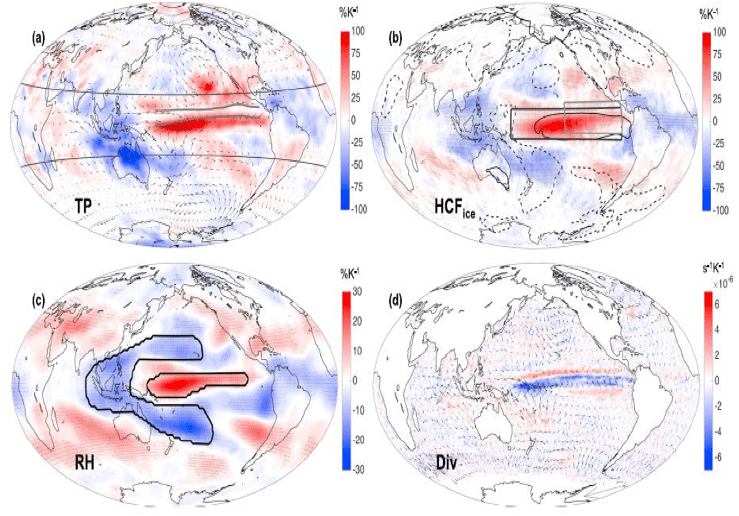Climate change changing ENSO
NASA continues to study the relationship between changing global temperatures and their impact on global weather patterns. New studies this year used decades’ worth of comprehensive, independent satellite observations along with monthly average climate anomalies of temperature and radiative flux data in an attempt to determine how the hydrological cycle could respond to different climate scenarios. The research showed that warming climates lead to a regional intensification of the tropical hydrological cycle during El Niño Southern Oscillation events: meaning that future El Niño events will likely be much more intense.
Data Sources: Gridded mean anomalies for 2000-2015 of various climate variables: temperature anomalies from GISS Surface Temperature Analysis, top-of-atmosphere and surface radiative flux data from CERES EBAF, MODIS and AIRS, QuickSCAT and MERRA-2
Publications
Stephens, Graeme et al. (2018). Geophysical Research Letters, 45, 4361–4370. https://doi.org/10.1029/2018GL077598
< Previous Discovery | Next Discovery >
< Back to: A Year in Review





























